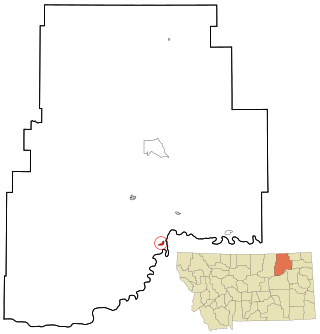
Fort Peck is a town in Valley County, Montana, United States. The population was 239 at the 2020 census.

Konstantin Stepanovich Melnikov was a Russian architect and painter. His architectural work, compressed into a single decade (1923–33), placed Melnikov on the front end of 1920s avant-garde architecture. Although associated with the Constructivists, Melnikov was an independent artist, not bound by the rules of a particular style or artistic group. In 1930s, Melnikov refused to conform with the rising Stalinist architecture, withdrew from practice and worked as a portraitist and teacher until the end of his life.

The Mount McKinley National Park Headquarters District in Alaska, United States, in what is now called Denali National Park was the original administrative center of the park. It contains an extensive collection of National Park Service Rustic structures, primarily designed by the National Park Service's Branch of Plans and Designs in the 1930s.
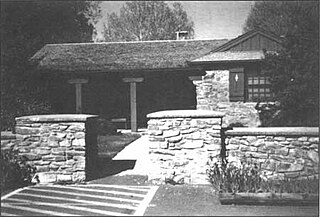
The Bly Ranger Station is a United States Forest Service compound that serves as the headquarters for the Bly Ranger District which is an administrative subdivision of the Fremont National Forest. It is located in the small unincorporated community of Bly in southcentral Oregon. The ranger station was constructed by the Civilian Conservation Corps between 1936 and 1942. Today, the seven original buildings are still used by the Bly Ranger District. The compound was listed on the National Register of Historic Places as a historic district in 1981.

The Leavenworth Ski Hill is a small ski area and an historic district located at the end of Ski Hill Drive in Leavenworth, Washington, United States. The facility is located inside the Wenatchee National Forest. Operated by Leavenworth Winter Sports Club, the facility includes two small downhill ski hills, 26 km of cross-country ski trails, a ski jump, and a tubing hill.

The Cathedral of Cartagena in Spain, or the Cathedral of Santa María la Vieja, was a cathedral of the Diocese of Cartagena, located on the hill of La Concepción in the old town of Cartagena. It has been in ruins since 1939, when it was destroyed when Cartagena was shelled in the Spanish Civil War by Nationalist forces.
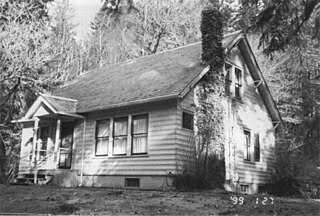
The Elwha Ranger Station is a historic district in Olympic National Park, originally built in the 1930s for the U.S. Forest Service. The complex of fourteen buildings is divided in two by Olympic Hotsprings Road. To the east lie the ranger station and three residences, with nine maintenance buildings on the west side of the road. The complex was turned over to the National Park Service in 1940 when the land was added to Olympic National Park from Olympic National Forest. Construction is typical of USFS practice, and reflects the Forest Service's preference of the time for bungalow and American Craftsman style architecture.
Architects of the United States Forest Service are credited with the design of many buildings and other structures in National Forests. Some of these are listed on the National Register of Historic Places due to the significance of their architecture. A number of these architectural works are attributed to architectural groups within the Forest Service rather than to any individual architect. Architecture groups or sections were formed within engineering divisions of many of the regional offices of the Forest Service and developed regional styles.

The Chatter Creek Guard Station is a Rustic style set of buildings in Wenatchee National Forest, in Leavenworth, Washington. It was designed by the USDA Forest Service Architecture Group and built by the Civilian Conservation Corps. The listing includes three contributing buildings:
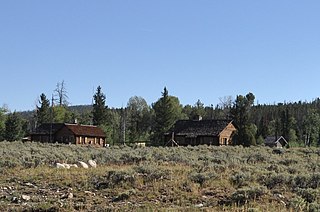
The Brush Creek Work Center in Medicine Bow National Forest near Saratoga, Wyoming is a ranger station of the USDA Forest Service, Region 2 that was built during 1937-41 and is listed on the National Register of Historic Places. It was designed by architects of the United States Forest Service in rustic style. The designs were applications of standard plans.
The Butte Falls Ranger Station, located in Rogue River – Siskiyou National Forest in Butte Falls, Oregon, was built in 1935 by the Civilian Conservation Corps. It was designed by architects of the United States Forest Service in rustic style.
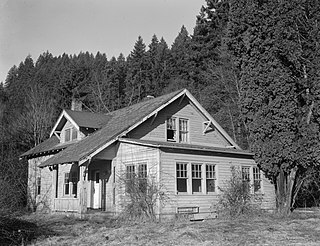
Randle Ranger Station-Work Center in Gifford Pinchot National Forest near Randle, Washington was built during 1935-36 by the Civilian Conservation Corps. It was listed on the National Register of Historic Places in 1986 for its architecture. It was designed by the USDA Forest Svce. Architecture Group in Rustic architecture. The listing included seven contributing buildings including a single dwelling, a secondary structure, a warehouse, and a fire station on a 5-acre (2.0 ha) area.
The Crown King Ranger Station is a ranger station near the top of Crown King Mountain in the area of Crown King, Arizona. It was built in 1934 by the Civilian Conservation Corps. Known also as Crown King Work Station or Crown King Administrative Site, it was listed on the National Register of Historic Places in 1993 for its architecture. It was designed by the USDA Forest Service in Bungalow/Craftsman style. It served as institutional housing and government office space. The NRHP listing included five contributing buildings on a 1.5-acre (6,100 m2) area. The complex includes a residence, an office, a barn/garage/shop, a hay barn, and a well building.

The Glide Ranger Station in Umpqua National Forest near Glide, Oregon was built in 1938 by the Civilian Conservation Corps. It served historically as a government office. It was listed on the National Register of Historic Places in 1986 for its architecture. It was designed by architects of the United States Forest Service in Rustic and other architecture.
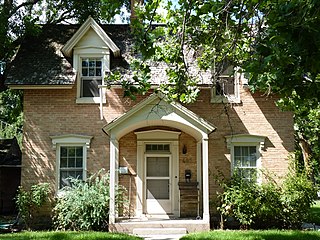
The Johnson–Hansen House is a historic house located in Provo, Utah, United States, that is listed on the National Register of Historic Places.

172 and 174 Baker Street is a grade II listed house in Enfield, London. Number 172 is a former shop and part of the brick built house while number 174 comprises the rest of the house. The shop was used by the National Deposit Friendly Society and had a door facing the street until recent times. The weatherboarding is modern.
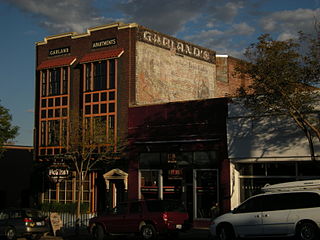
The Downtown Wenatchee Historic District, located in Wenatchee, Washington, is a historic district listed on the National Register of Historic Places. The district, encompassing 34 acres (14 ha), is a collection of commercial, mixed-used, and warehouse buildings located in the central business district of Wenatchee downtown. It contains a total of 57 contributing and 32 noncontributing properties.
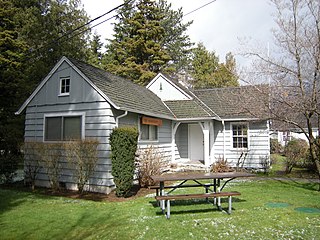
The North Bend Ranger Station is a collection of buildings operated by the USDA Forest Service in the Mount Baker-Snoqualmie National Forest. Constructed by the Civilian Conservation Corps (CCC) in 1936, it was added to the National Register of Historic Places in 1991. The multiple buildings indicate the expansion of Forest Service responsibilities from custodial supervision to extensive resource management. North Bend Ranger Station is considered historic both for its distinctive rustic architecture and for its association with the federal New Deal programs.
The Krassel Ranger Station, near Yellow Pine, Idaho, was built in 1937. It was listed on the National Register of Historic Places in 1992. The listing included four contributing buildings, a contributing structure, and a contributing site on 6.2 acres (2.5 ha).


















